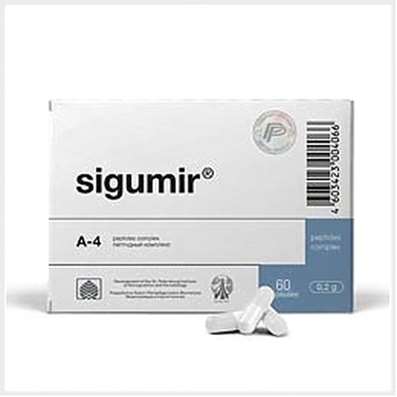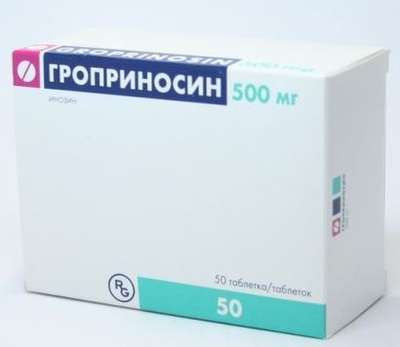Instruction for use: Ropinirole
I want this, give me price
The Latin name of the substance Ropinirole
Ropinirolum (genus. Ropiniroli)
Chemical name
4- (2-Dipropylaminoethyl) -1,3-dihydro-indol-2-one (as hydrochloride)
Gross Formula
C16H24N2O
Pharmacological groups:
Dopaminomimetics
Anti-Parkinsonics
The nosological classification (ICD-10)
G20 Parkinson's disease: A trembling paralysis; Idiopathic Parkinsonism; Parkinson's disease; Symptomatic Parkinsonism
G21 Secondary Parkinsonism: Medicinal Parkinsonism; Parkinsonism; Parkinsonism symptomatic; Disorders of extrapyramidal system; Parkinson's Syndrome
CAS Code
91374-21-9
Characteristics of the substance Ropinirole
Antiparkinsonian means.
Ropinirole hydrochloride is a white to yellow solid with a melting point in the range of 243 to 250 ° C and a solubility in water of 133 mg / ml.
Pharmacology
The pharmacological action is antiparkinsonian.
Selective non -ergoline agonist of dopamine D2 and D3 receptors. A possible mechanism of action in the treatment of Parkinson's disease is associated with a stimulating effect on the postsynaptic D2 receptors of the basal brain nuclei (caudate nucleus / shell). On models of Parkinson's disease in animals, it has been shown that ropinirole improves motor functions. In particular, it decreases motor deficiency caused by damage to the ascending nigrostriatal dopaminergic neurotoxin MPTP path (1-methyl-4-phenyl-1,2,3,6-tetrahydropyridine).
Compensating for deficiency of dopamine, ropinirole reduces the degree of hypodynamia, rigidity and tremor, which are symptoms of parkinsonism. It enhances the effects of levodopa, ropinirole, including monitoring the frequency of the phenomenon of "on / off" effect and "end of dose" associated with prolonged therapy of levodopa and allows to reduce the daily dose of levodopa. Ropinirole also has an effect on the hypothalamus and pituitary levels, inhibiting the secretion of prolactin.
Pharmacokinetics
Absorption. In clinical studies of ropinirole in the form of immediate release tablets it has been shown that 88% of the radioactively labeled substances in the urine is detected, the absolute bioavailability - 45-55% (the effect of "first pass" through the liver). The relative bioavailability of ropinirole in the form of sustained release tablets compared to ropinirole in the form of immediate-release tablets is approximately 100%. In a study of a single dose of ropinirole in the form of sustained release tablets in healthy volunteers shows that when taking food rich in fats, AUC increased by about 30% and Cmax - about 44%. In multiple dose study in patients with Parkinson's disease rich in fat food increases the AUC by about 20% and Cmax - about 44%, Tmax -. CSS 3 hours is achieved within 4 days.
Distribution. Ropinirole is well distributed to the tissues of the body, the apparent Vd is 7.5 l / kg. Binding to plasma proteins - up to 40%, blood / plasma ratio - 1: 1.
Metabolism. Ropinirole is extensively metabolized in the liver with the formation of inactive metabolites. In in vitro studies have demonstrated that ropinirole metabolized mainly CYP1A2 isoenzyme of cytochrome P450 (known that the induced isozyme smoking and omeprazole; inhibit - fluvoxamine, mexiletine, such "old" fluoroquinolones, such as ciprofloxacin, norfloxacin).
Excretion. The clearance of ropinirole after ingestion is 47 l / h, T1 / 2 - about 6 hours. It is excreted by the kidneys in the form of metabolites, less than 10% in unchanged form.
Pharmacokinetics in special clinical cases
Age. The clearance of ropinirole after ingestion is reduced by approximately 15% in patients 65 years of age or older compared with younger patients (dose adjustment is not required).
Floor. In women and men, the values of clearance are similar
Race. There were no changes in the pharmacokinetics of ropinirole depending on race.
Impaired renal function. Population pharmacokinetic analysis showed that the pharmacokinetics of ropinirole did not change in patients with impaired renal function of mild and moderate severity. The use of ropinirole in patients with severe renal failure was not assessed.
Violation of the function of the liver. The pharmacokinetics of ropinirole in patients with impaired liver function has not been studied. These patients may have a higher plasma level and lower ropinirole clearance than patients with normal liver function.
Clinical researches
The efficacy of ropinirole in the dosage form of sustained-release tablets was demonstrated in two randomized, double-blind, multicenter clinical trials in patients with early and advanced stages of Parkinson's disease. In one study, the efficacy and safety of ropinirole was compared with placebo, as an adjunct to levodopa therapy in patients with advanced stage of the disease who are on concomitant levodopa therapy (n = 393). The second study included patients with an early stage of the disease who did not receive levodopa (n = 161).
Application of the substance Ropinirole
According to the State Register1, ropinirole in the form of sustained-release tablets is indicated for the treatment of Parkinson's disease - monotherapy of early stages of the disease in patients requiring dopaminergic therapy to delay the administration of levodopa preparations; As part of combination therapy in patients receiving levodopa preparations to increase the effectiveness of levodopa, including control of the on-off phenomenon and the end-of-dose effect on the background of chronic levodopa therapy, and to reduce the daily dose of levodopa.
According to PDR (2009) 2, ropinirole in the dosage form of sustained-release tablets is indicated for the treatment of the idiopathic form of Parkinson's disease.
Contraindications
Hypersensitivity.
Restrictions on the use
Severe cardiovascular failure (see "Precautions"), a history of mental illness (can be prescribed only if the expected benefit exceeds the potential risk), impaired liver function, severe renal dysfunction (Cl creatinine <30 ml / min ), Pregnancy, the period of breastfeeding, age to 18 years (safety and efficacy in children are not defined).
Application in pregnancy and lactation
When pregnancy is possible, if the expected effect of therapy exceeds the potential risk to the fetus.
The action category for fetus by FDA is C.
Ropinirole inhibits the secretion of prolactin in humans and can potentially inhibit lactation. Studies in animals have shown that ropinirole and / or its metabolites are excreted into the milk of lactating rats. It is unknown whether ropinirole is excreted into human breast milk.
Since many drugs are excreted with the woman's milk and a potentially serious impact of ropinirole on the baby, a decision should be made either to stop breastfeeding or to refuse taking ropinirole (given the degree of need for the drug for the mother).
Side effects of the substance Ropinirole
Study in patients with advanced stage of Parkinson's disease who are on concomitant levodopa therapy.
The most frequently observed side effects (≥5% and placebo-exceeding) in patients receiving ropinirole in the dosage form of the sustained-release tablets were: dyskinesia, nausea, dizziness, hallucinations, drowsiness, pain / discomfort in the abdomen , Orthostatic hypotension.
Approximately 6% of the 202 patients receiving ropinirole in the dosage form of the sustained-release tablets discontinued treatment due to side effects, compared to the placebo group: 5% of the 191 patients. The side effect, most often leading to the withdrawal from ropinirole treatment, were hallucinations (2%).
The table shows the side effects observed with a frequency of ≥2% in patients receiving ropinirole in the dosage form of sustained-release tablets and exceeding the placebo frequency.
Table
Side effects observed in double-blind, placebo-controlled trials in patients with advanced Parkinson's disease (with concomitant levodopa therapy)
| Body Systems / Adverse Reactions | Ropinirole (n=202), % | Plazebo (n=191), % |
| Ear disorders and labyrinthine disorders | ||
| Vertigo | 4 | 2 |
| Gastrointestinal disorders | ||
| Nausea | 11 | 4 |
| Constipation | 4 | 2 |
| Pain / discomfort in the abdomen | 6 | 3 |
| Diarrhea | 3 | 2 |
| Dry mouth | 2 | <1 |
| General reactions | ||
| Peripheral edema | 4 | 1 |
| Falls (dose-dependent effect) | 2 | 1 |
| Disorders of the musculoskeletal system and connective tissue | ||
| Backache | 3 | 2 |
| From the nervous system | ||
| Dyskinesia (dose-dependent effect) | 13 | 3 |
| Dizziness | 8 | 3 |
| Drowsiness | 7 | 4 |
| From the side of the psyche | ||
| Hallucinations | 8 | 2 |
| Anxiety | 2 | 1 |
| On the part of the CAS | ||
| Orthostatic hypotension | 5 | 1 |
| Arterial hypotension | 2 | 0 |
| Hypertension (dose-dependent effect) | 3 | 2 |
Study in patients with early stage Parkinson's disease (without concomitant levodopa therapy).
The most frequently observed adverse events (≥5% and placebo exceeding placebo) in patients receiving ropinirole in the form of sustained-release tablets in a 36-week study were: nausea (19%), drowsiness (11%), pain / discomfort In the abdomen (7%), dizziness (6%), headache (6%), constipation (5%).
It should be borne in mind that side effect data obtained in placebo-controlled studies can not be used to predict the occurrence of side effects in routine medical practice, because The status of patients and other factors may differ from those that prevailed in clinical trials. Similarly, the incidence of side effects reported in the tables (in percentages) may differ from those obtained by other clinical researchers, since Each drug test can be conducted with a different set of conditions. However, these figures give the doctor an idea of the relative contribution of the substance itself and other factors (not related to drugs) to the development of side effects when using drugs in the population.
Interaction
In vitro studies have shown that ropinirole is metabolized mainly with the participation of cytochrome P450 isoenzyme CYP1A2. Accordingly, inhibition (eg, drugs such as ciprofloxacin, fluvoxamine) or induction (eg, omeprazole or smoking) of the CYP1A2 isoenzyme may alter the clearance of ropinirole. In this regard, in the event of termination or initiation of treatment with strong inducers or inhibitors of CYP1A2 in the treatment with ropinirole, an adjustment of its dose may be necessary.
Ciprofloxacin. The combined use of ciprofloxacin inhibitor CYP1A2 (500 mg twice daily) and ropinirole as immediate-release tablets (2 mg 3 times daily) leads to an increase in Cmax and AUC of ropinirole by approximately 60% and 84%, respectively (n = 12 patients).
Smoking cigarettes, apparently, increases the clearance of ropinirole, tk. It is known that smoking stimulates this isoenzyme.
Levodopa. The combined use of a combination of carbidopa + levodopa (10/100 mg twice daily) with ropinirole (2 mg 3 times a day) did not affect the equilibrium pharmacokinetics of ropinirole (n = 28 patients). Oral administration of ropinirole (2 mg 3 times a day) resulted in an increase in the equilibrium Cmax value of levodopa by 20%, but did not affect AUC (n = 23 patients).
Digoxin. The combined use of ropinirole (2 mg 3 times daily) with digoxin (0.125 mg-0.25 mg once daily) did not affect the equilibrium pharmacokinetics of digoxin (n = 10 patients).
Theophylline. Pharmacokinetic study of drug interaction in 12 patients with Parkinson's disease showed that the use of theophylline, a substrate of the isoenzyme CYP1A2 (300 mg twice daily) and ropinirole (2 mg 3 times a day) did not alter the pharmacokinetics of ropinirole in the equilibrium state. Ropinirole (2 mg 3 times a day) did not affect the pharmacokinetics of theophylline (5 mg / kg IV).
Estrogens. Population pharmacokinetic analysis revealed that estrogen in high doses (usually used with hormone replacement therapy - HRT) reduced the oral clearance of ropinirole by approximately 35% (n = 16 patients). Patients who received HRT prior to starting ropinirole treatment do not need to adjust their dose, but the dose of ropinirole must be adjusted in the case of starting or stopping HRT when ropinirole is treated.
Dopamine antagonists. Since ropinirole is a dopamine agonist, it is possible that dopamine antagonists such as neuroleptics (phenothiazines, butyrophenones, thioxanthenes) or metoclopramide may decrease the effectiveness of ropinirole (simultaneous administration should be avoided).
Population analysis has shown that commonly prescribed drugs, such as selegiline, amantadine, tricyclic antidepressants, benzodiazepines, ibuprofen, thiazides, antihistamines and anticholinergics, do not affect the oral clearance of ropinirole.
Overdose
Symptoms: when taking more than 24 mg / day - mainly due to dopaminergic activity (nausea, dizziness), as well as visual hallucinations, hyperhidrosis, claustrophobia, chorea, severe palpitation, asthenia, nightmares, vomiting, drowsiness. In addition, when taking less than 24 mg / day (or if the dose is unknown), vomiting, coughing, fatigue, and fainting were observed. Vasovagal, dyskinesia, agitation, chest pain, orthostatic hypotension, drowsiness, confusion.
Treatment: use of dopamine antagonists, such as neuroleptics or metoclopramide, maintenance therapy.
Routes of administration
Inside.
Precautions for the substance Ropinirole
Drowsiness and attacks of sudden falling asleep. Patients should be warned about the possibility of developing drowsiness or episodes of sudden falling asleep, which may lead to trauma. In case of occurrence of such reactions it is necessary to provide for the possibility of canceling therapy with ropinirole.
Syncope. When treated with ropinirole, there was a syncope, sometimes associated with bradycardia. Thus, in a placebo-controlled study, syncope was recorded in 2 of 202 (1%) patients with the advanced stage of the disease and not in one patient in the placebo group.
Since patients with severe cardiovascular insufficiency were not included in the clinical studies of delayed-release ropinirole, it should be used with caution in this patient category (see "Restrictions on Use").
Arterial hypotension. Dopamine agonists affect the systemic regulation of blood pressure and, as a result, can lead to postural hypotension. In patients with Parkinson's disease, taking ropinirole, monitoring of blood pressure is recommended. Arterial hypotension, incl. Orthostatic, can develop both at the time of titration dose, and during maintenance therapy.
Increased blood pressure and changes in heart rate. In a placebo-controlled trial of ropinirole in patients with developed Parkinson's disease, there was no significant change in mean values of blood pressure and heart rate in patients treated with ropinirole compared with placebo. However, a marked increase in the SAD (≥40 mm Hg) was recorded in the "reclining" position in 8% of the patients in the ropinirole group, compared with 5% in the placebo group, in the standing position - at 9 and 6%, respectively. The increase in heart rate (≥15 bpm) in the "reclining" position was observed in 23% of patients in the ropinirole group, compared to 18% in the placebo group, a decrease in heart rate (≥15 bpm) in 19 and 17% of cases, respectively. In the standing position, there was a marked increase in heart rate (≥30 beats per minute) with ropinirole in 2% of cases compared with <1% placebo and a moderate decrease in heart rate (≥15 bpm), 24% and 19% respectively.
An increase in blood pressure and a change in heart rate were observed both at the time of titration of the dose and during the period of maintenance therapy.
The possibility of increasing blood pressure and changes in heart rate should be considered when treating ropinirole patients with cardiovascular diseases (see "Restrictions on use").
Hallucinations. The incidence of hallucinations increases in patients older than 65 years. The combined use of entacapone and levodopa with ropinirole may also increase the risk of developing this adverse effect. In a placebo-controlled clinical trial, 43 patients who received simultaneous entacapone and levodopa hallucinations were not recorded, in patients treated with delayed-release ropinirole together with levodopa hallucinations, 9 patients out of 155 (6%) who received simultaneously entacapone, ropinirole and levodopa - in 7 patients out of 47 (15%).
Dyskinesia. Ropinirol sustained release potentiates the dopaminergic side effect of levodopa and can cause and / or intensify manifestations of pre-existing dyskinesia in patients with Parkinson's disease treated with levodopa. Reducing the dose of dopaminergic drugs can reduce this adverse effect.
Psychoses. It is not recommended to prescribe ropinirole to patients with mental disorders, since there is a risk of exacerbation of psychosis. In addition, many drugs used in the treatment of pschosis can reduce the effectiveness of ropinirole (see "Interaction").

 Cart
Cart





